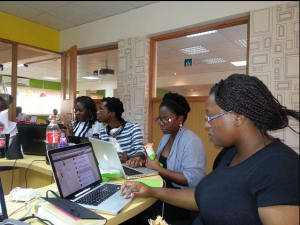In psychology, resilience refers to the ability to adapt well to adversity, trauma, tragedy, or other kinds of extreme stress. Being resilient provides advantages for both individuals and companies, as evidenced by the last two turbulent years. Despite limited resources, the COVID-19 pandemic has compelled organizations to hasten their reform. This has intensified the need to maximize whatever resources are available to maintain business continuity and employee care.
Read more about Career
We observed teams dealing with work pressure, overcoming obstacles, and contributing to organizational goals. We’ve also observed how greater job demands can make teams more resilient in driving business success.
Here are some ways for building a resilience team to confront setbacks and challenges:
1. Establish a strong support system
A strong support system is one of the most important techniques for building resilience in your teams. Developing a support system with the appropriate resources and tools can help keep employees motivated and fulfilled at work. Mentorship programs or flexible working conditions that bring out the best in each member of the team can be used as resources and tools to strengthen relationships and create resilience. Showing support can aid struggling coworkers, raise morale, and increase efficiency. Try to determine whether your team appreciates each other’s assistance, and if not, be a role model for the appropriate activities.
2. Exercise adaptability
Maintaining an organization’s viability during the pandemic has needed modifications in systems, structures, and processes. You should exercise adaptation to increase team resilience and to allow employees to participate in problem-solving. Helping employees develop problem-solving methods might help them see challenges as puzzles that can be solved. They will understand that problem-solving necessitates the use of novel ways that may be tried to determine which one works best. Your teams may be dealing with issues such as childcare, stress, family support, and health anxiety. As a result, they may require your patience and understanding when it comes to timetables and deadlines. Assist your teams in developing a resilient mentality while remaining enthusiastic, energetic, and open to change.
3. Encourage competence
Work is evolving, as are workplaces and workforces. This can lead to increased uncertainty for older workers. Instead of replacing workers, you may improve both teams and team members by focusing on reskilling and upskilling. Helping your staff prepare for these shifts can increase your team’s adaptability and resilience in other areas. Increasing mentorship, increasing work-life balance, and offering meaningful work to team members can all assist create resiliency among your organization’s youngest members.
Sign up for the Connect Nigeria daily newsletter
Consider a mentor program that will offer support and direction as well as serve as a sounding board for you.
4. Establish trust
You may face special problems as a leader. This is your chance to be open and honest about your feelings regarding those problems. In the long run, taking the following steps can help to develop team relationships and build resilience:
- Keeping your teams up to date
- Maintaining accountable leadership
- Setting a good example
- Handling challenging issues honestly
- Assisting your team’s career goals
5. Encourage optimism
Employees’ levels of optimism vary greatly inside the organization. Every team member, however, may boost their optimism. Your teams may have faced significant hurdles in recent months, making it difficult to maintain a positive attitude. Your responsibility should be to demonstrate that you care about what your staff is going through. Encourage people to focus on what they can control and to come up with creative ways to respond to events as they happen. Employees might be encouraged to be optimistic at work by praising them and recognizing their successes. In the long run, this can motivate them and increase their production.
Register to attend the Connect Nigeria Business Mixer
You may also become a mentor by defining goals that hold everyone on your team accountable for the growth and overall success of the organization.
6. Communicate frequently and align tasks with goals
Employee communication can play a significant role in creating resilience during times of disaster. Teams crave updates, especially when they work remotely. Provide more frequent updates to showcase outstanding work, address modifications, and recognize high-performing team members. Encourage two-way communication and allow your teams to collaborate. Committing to frequent updates might help to unite team members and minimize fatigue. An open and honest discussion about your team’s common mission and how it relates to daily duties can boost the team’s resilience.
Make an inspirational goal. It is about connecting with individuals and sharing an inspiring belief when defining the basis for a team’s existence. A relevant and clear purpose gives team members guidance in how they communicate and perform.
Team resilience is a key component of effective performance that many leaders strive for. Incorporating the above resilience-building principles is a wonderful method to equip your teams to overcome problems and adapt to changes that may arise in any crisis, today or the future.
Featured Image Source: Nairametrics
Got a suggestion? Contact us: [email protected]


